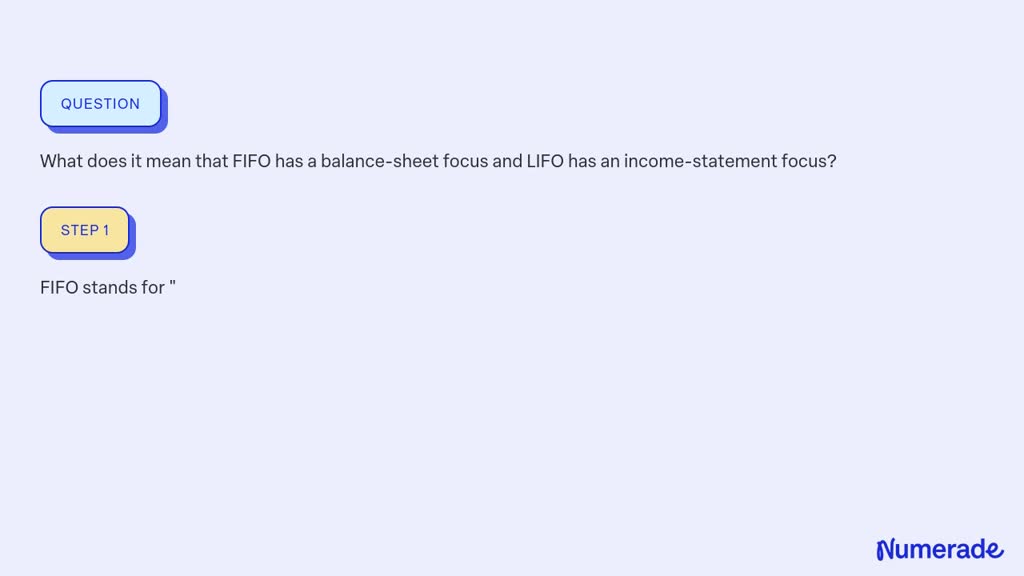puttepong
Businesses would use the LIFO method to help them better match their current costs with their revenue. This is particularly useful in industries where there are frequent changes in the cost of inventory. This is achieved because the LIFO method assumes that the most recent inventory items are sold first. Cin7 was built with modern businesses in mind and only supports the FIFO method. Our inventory and order management software supports better accounting and offers a cloud-based solution that integrates all your sales channels into a single platform. Cin7 products provide advanced automation processes to create seamless transactions centered around a positive customer experience.
How do you calculate FIFO and LIFO?
But in this article, our focus is only on the FIFO and LIFO methods of inventory cost accounting and the comparison between the two. Both these methods are pure methods of accounting for and reporting inventory value. Whichever method is adopted, it does not govern the addition or removal of inventory from the stock for further processing or selling.
Inventory values when all units are sold
When all of the units in goods available are sold, the total cost of goods sold is the same, using any inventory valuation method. When all inventory items are sold, the total cost of goods sold is the same, regardless of the valuation method you choose in a particular accounting period. The first in, first out (FIFO) cost method assumes that the oldest inventory items are sold first, while the last in, first out method (LIFO) states that the newest items are sold first. The inventory valuation method that you choose affects cost of goods sold, sales, and profits. When sales are recorded using the LIFO method, the most recent items of inventory are used to value COGS and are sold first.
Rising Prices and FIFO
LIFO usually does not reflect inventory replacement costs as well as other inventory accounting methods. The LIFO method of inventory accounting is a more complex method of costing inventory. LIFO is the inventory accounting method that operates under the assumption that a business firm how are my state taxes spent uses its inventory last in, first out. The assumption is that the firm sells the last unit of inventory purchased first. Because FIFO represents the cost of recent purchases, it usually more accurately reflects inventory replacement costs than other inventory accounting methods.
FIFO vs. LIFO: What is the difference?
The FIFO (“First-In, First-Out”) method means that the cost of a company’s oldest inventory is used in the COGS (Cost of Goods Sold) calculation. LIFO (“Last-In, First-Out”) means that the cost of a company’s most recent inventory is used instead. One of its drawbacks is that it does not correspond to the normal physical flow of most inventories.
Great! The Financial Professional Will Get Back To You Soon.
All of our content is based on objective analysis, and the opinions are our own. This is because it must replace the inventory at a cost of at least $85. However, in some sectors of the economy, such as electronics, prices have been falling. Inventory is where many companies have the majority of their funds invested. Inventory typically consists of raw materials, work-in-process, and finished goods.
However, International Financial Reporting Standards (IFRS) permits firms to use FIFO, but not LIFO. Check with your CPA to determine which regulations apply to your business. Since the seafood company would never leave older inventory in stock to spoil, FIFO accurately reflects the company’s process of using the oldest inventory first in selling their goods.
- The lowest gross margin and ending inventory and highest cost of goods sold resulted when LIFO was used.
- Conversely, COGS would be lower under LIFO – i.e. the cheaper inventory costs were recognized – leading to higher net income.
- Start a free trial to explore how to reach new markets with Cin7’s inventory and order management system.
However, the company already had 1,000 units of older inventory that was purchased at $8 each for an $8,000 valuation. The $1.25 loaves would be allocated to ending inventory (on the balance sheet). Inventory valuation methods are ways that companies place a monetary value on the items they have in their inventory.
LIFO (last-in-first-out) and FIFO (first-in-first-out) are the two most common inventory cost methods that companies use to account for the costs of purchased inventory on the balance sheet. The FIFO and LIFO compute the different cost of goods sold balances, and the amount of profit will be different on December 31st, 2021. As a result, the 2021 profit on shirt sales will be different, along with the income tax liability.
Also, the LIFO approach tends to understate the value of the closing stock and overstate COGS, which is not accepted by most taxation authorities. If a company uses the LIFO method, it will need to prepare separate calculations, which calls for additional resources. If you refer back to the simple example on this page, you’ll see that on a LIFO basis, the firm’s gross margin is $15. This is because the 15 December 2019 purchase is matched against the $100 sale. In fact, if a company switched to LIFO 20 years ago, the original LIFO layers, if unsold, would be costed at 20-year-old prices.
Businesses can select the inventory valuation that best suits their operations. However, they cannot frequently change their inventory valuation method to manipulate the income statement in their favor. In the tables below, we use the inventory of a fictitious beverage producer called ABC Bottling Company to see how the valuation methods can affect the outcome of a company’s financial analysis. However, please note that if prices are decreasing, the opposite scenarios outlined above play out. In addition, many companies will state that they use the “lower of cost or market” when valuing inventory.
ที่อยู่
ฝ่ายกลยุทธ์วิจัยและถ่ายทอดเทคโนโลยี (SPD)
ศูนย์เทคโนโลยีอิเล็กทรอนิกส์และคอมพิวเตอร์แห่งชาติ (ศอ.)
ติดต่อเรา
![]() 025646900 ต่อ 2353
025646900 ต่อ 2353
![]() https://www.nectec.or.th/innovation/
https://www.nectec.or.th/innovation/
![]() HandySense Community
HandySense Community



-d4ff75bb7350389bb1c2c9c5ddb296c9.png)
-eff8c8e273d5863fdb02cf0bb7de785a.png)